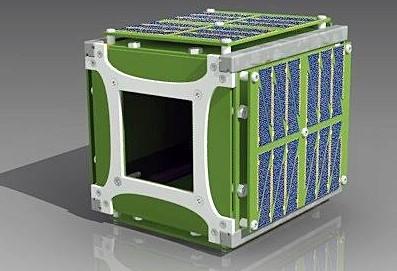As the global space industry continues to expand at a rapid rate, 3D printing technology has clearly become a vital production tool for the future of our otherworldly ventures. Whether it be 3D printed rocket thrusters being used to help us launch off the earth, or an actual 3D printing system on the International Space Station (ISS) to help our astronauts persevere in this vastly unknown and infinite environment, the emergence of this technology will undoubtedly continue to play a major role in the future of space exploration.
In countries across the world, from government agencies to university researchers, 3D printing technology is increasingly being utilized to produce satellites, namely cube satellites. Earlier this year, the Russia-based Tomsk Polytechnic University developed a 3D printed nanosatellite to send to the ISS, and is currently in the midst of its six-month journey in orbit. This coming December, a 3D printed CubeSat created by a team of researchers and students from the University of New South Wales will be among 50 satellites that will be launched into the thermosphere.
 Now, the OpenOrbiter project team, which is a collaboration between hundreds of students and faculty from both the University of North Dakota (UND) and North Dakota State University (NDSU), has created a low-cost cube satellite to send experiments to the ISS. With the help of the local space technology service provider, which is called Open Space Frontier Technologies, they plan to launch their low-cost and compact-sized CubeSat, which will include a 3D printing experiment in the small payload, to the ISS. Open Space Frontier Technologies was started by the twin brother tandem Michael and Sean Wegerson, along with designer Alex Holland.
Now, the OpenOrbiter project team, which is a collaboration between hundreds of students and faculty from both the University of North Dakota (UND) and North Dakota State University (NDSU), has created a low-cost cube satellite to send experiments to the ISS. With the help of the local space technology service provider, which is called Open Space Frontier Technologies, they plan to launch their low-cost and compact-sized CubeSat, which will include a 3D printing experiment in the small payload, to the ISS. Open Space Frontier Technologies was started by the twin brother tandem Michael and Sean Wegerson, along with designer Alex Holland.
“We are going to be putting in a 3D printer inside the little payload right here to 3D print material straight out. Just to see a proof of concept, can we 3D print in space?” said Holland.
Open Space Frontier Technologies arose from the OpenOrbiter project at the University of North Dakota. The team created the initial CubeSat designs and is working on the 3D printed payload, which they plan to send to the ISS at the end of this December, and from there, it will be launched into orbit come January 2017. Not only is the student team aiming to successfully send a cube satellite into orbit, their primary goal is to accomplish such a feat at a much more affordable rate than the current industry permits. Although cube satellites generally cost upwards of $50,000, the team of UND and NDSU students were able to reduce that cost by producing everything in-house.
For instance, the satellite’s solar panels are assembled within a household toaster oven, while the body is created with a low-cost milling machine. If successful, the students’ mission could have a major impact on the space industry. By utilizing more affordable methods—such as 3D printing technology— to produce satellites, rocket parts, and other various space tools, innovative companies like Open Space Frontier Technologies are helping us gain better access, and thus better insight, into the infinite universe around us. Discuss further in the CubeSat with 3D Printer forum over at 3DPB.com. Discuss further in the CubeSat with 3D Printer forum over at 3DPB.com.
[Source: Kare 11]
Subscribe to Our Email Newsletter
Stay up-to-date on all the latest news from the 3D printing industry and receive information and offers from third party vendors.
You May Also Like
Gorilla Sports GE’s First 3D Printed Titanium Cast
How do you help a gorilla with a broken arm? Sounds like the start of a bad joke a zookeeper might tell, but it’s an actual dilemma recently faced by...
Nylon 3D Printed Parts Made More Functional with Coatings & Colors
Parts 3D printed from polyamide (PA, Nylon) 12 using powder bed fusion (PBF) are a mainstay in the additive manufacturing (AM) industry. While post-finishing processes have improved the porosity of...
$25M to Back Sintavia’s Largest Expansion of Metal 3D Printing Capacity Since 2019
Sintavia, the digital manufacturing company specializing in mission-critical parts for strategic sectors, announced a $25 million investment to increase its production capacity, the largest expansion to its operations since 2019....
Velo3D Initiates Public Offering in a Bid to Strengthen Financial Foundations and Drive Future Growth
Velo3D (NYSE: VLD) has been among a number of publicly traded 3D printing firms that have attempted to weather the current macroeconomic climate. After posting a challenging financial report for 2023,...


































